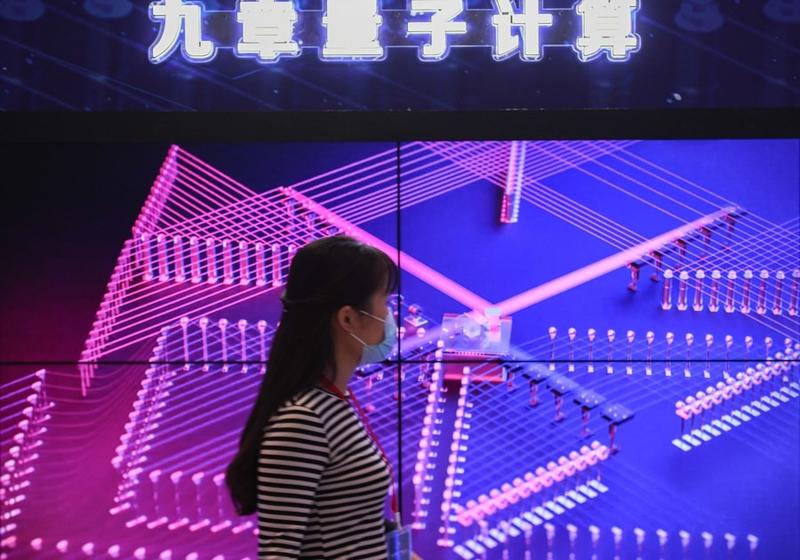 A participant visits the 2021 Quantum Industry Conference in Hefei, east China's Anhui province, Sept 18, 2021. (PHOTO / XINHUA)
A participant visits the 2021 Quantum Industry Conference in Hefei, east China's Anhui province, Sept 18, 2021. (PHOTO / XINHUA)
BEIJING - Chinese scientists developed an e-commerce strategy that enabled the world's first five-user online trading utilizing quantum technology.
Currently, the e-commerce messages, which are guarded by classical encryption algorithms, are vulnerable to hacking by powerful quantum computing.
READ MORE: Quantum leap
Therefore, some cryptologists have tried to use quantum entanglement to securely distribute unhackable quantum states among multiple parties to guard against identity theft and payment fraud.
In an experiment, the team demonstrated a five-user quantum network using the protocol, according to the study published on Saturday in the journal Science Advances
However, a feasible quantum algorithm that prevents message senders from denying offers they have already made in transactions has not been developed previously.
Researchers at Nanjing University and Renmin University of China created an e-commerce protocol based on a new quantum digital signature (QDS) that generates correlated bit strings among multiple remote parties for signatures via quantum law.
READ MORE: Chip gives edge in quantum computing
They proposed a QDS approach that combined quantum secret sharing and one-time universal hashing to ensure transaction integrity, authenticity, and, in particular, non-repudiation.
In an experiment, the team demonstrated a five-user quantum network using the protocol, according to the study published on Saturday in the journal Science Advances.
READ MORE: China's 3rd-gen superconducting quantum computer operational
The quantum network can ensure that contract signing and payments are executed fast and accurately, eliminating the need for a trusted third party to be identified in advance.
"Our work contributes to the further development of e-commerce in the quantum era by providing a practical and efficient solution with enhanced security", said Yin Hualei, an associate professor from Renmin University of China.


